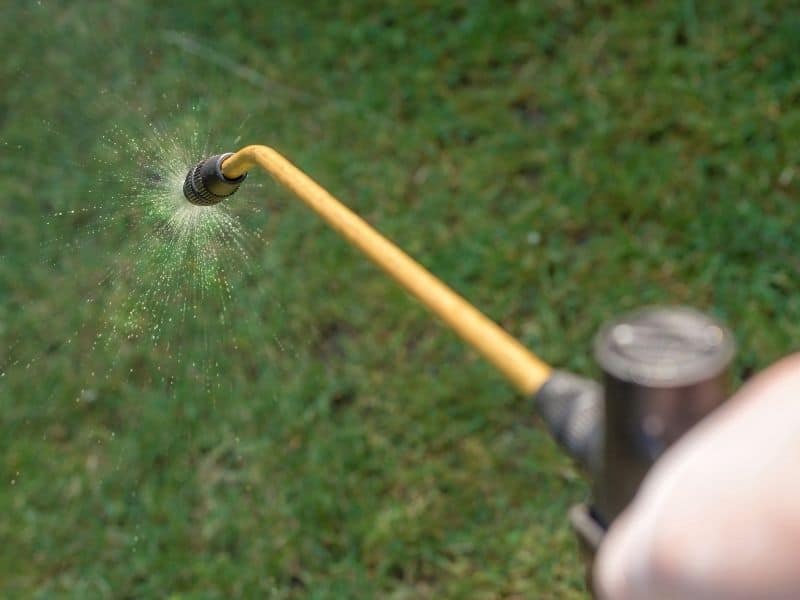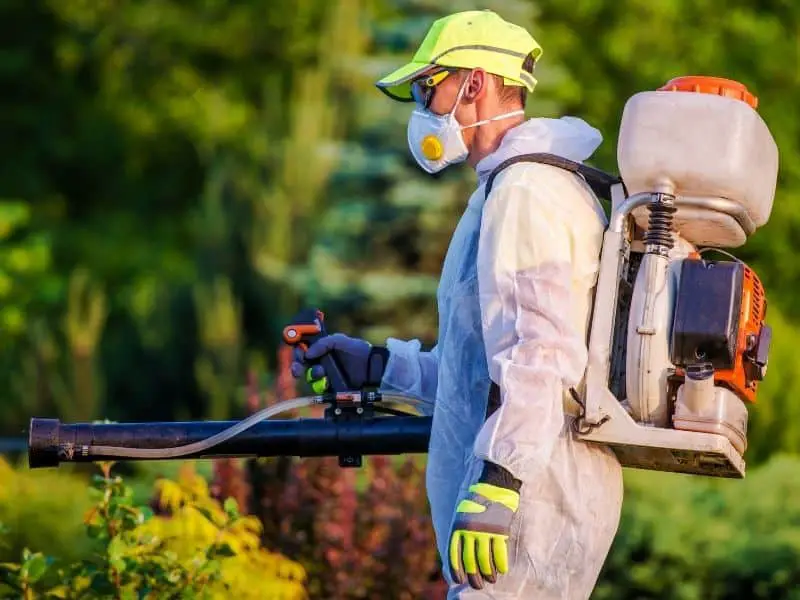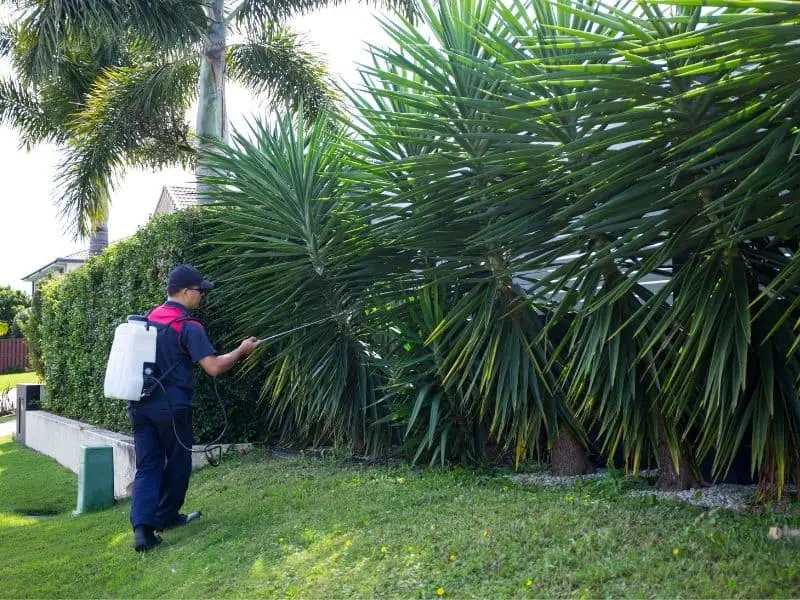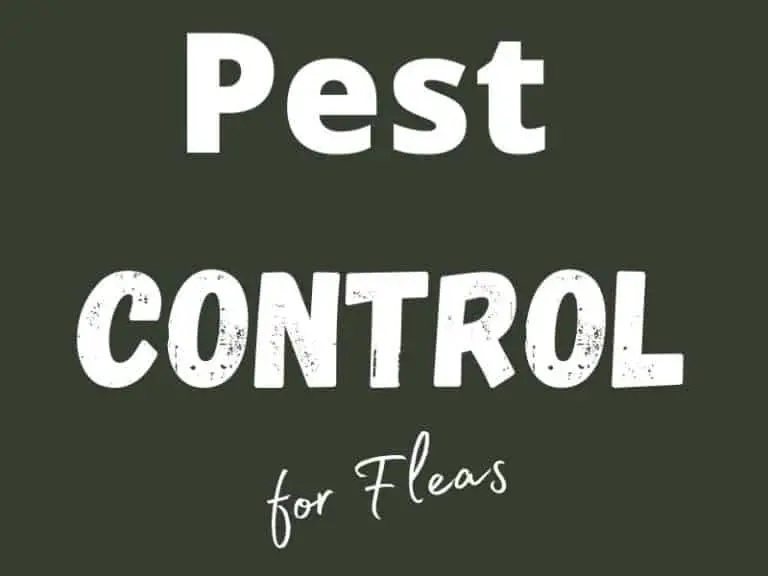Is Quarterly or Monthly Pest Control Worth It?
Some common household pests can be very difficult to get rid of through different home remedies. Many of them seem to come back quite easily, bothering you all over again. To prevent an infestation, you are willing to do anything and everything necessary, even pay monthly.
Quarterly or monthly pest control is worth it if the pest is quite common in the area. Preventive pest control can help save cash since it can fend off a serious infestation, which requires costly and intensive treatments. It’s best to pair quarterly or monthly pest control with preventive measures.
If you want to know some of the most important matters about quarterly or monthly pest control, read on. Below, you will come across pieces of information essential for having a pest-free home.
Some States are Buggier Than the Rest
Many common household pests can welcome themselves into your home and wreak havoc on your life — and even put the health of everyone you love at risk!
Some of the pests that you are more likely to encounter are bugs like bed bugs, dust mites, ants, termites and cockroaches.
Refrain from assuming that keeping your home clean can keep bugs at bay. As a matter of fact, in many cases, cleanliness has absolutely nothing to do with having a pest-free life.

Bugs, for instance, are more common in areas that are hot and humid. And when summer strikes, it is customary for all sorts of insects to become more active and, ultimately, cause more homeowners to freak out.
Did you know that the hotter the climate, the more likely it is for cockroaches to fly?
Here are the top 10 states with the most reported pesky insects:
- Florida
- Louisiana
- Texas
- California
- Georgia
- New York
- Mississippi
- Alabama
- Missouri
- South Carolina
On the other hand, the following 10 states have the least bugs:
- Washington
- South Dakota
- Connecticut
- Idaho
- New Hampshire
- Delaware
- North Dakota
- Illinois
- Utah
- New Mexico
Do take note that the lists of the buggiest and least buggy US cities above only take into account the number of encounters with bugs. They do not consider other common household pests, such as rodents.
For instance, Washington may have the least insects alright. However, the state’s residents have a serious problem with rodents. As a matter of fact, Washington is one of the states in the US with the most rats.
Other states with the most rat infestations include Pennsylvania, Michigan, California, New York, and Illinois.
Chicago, by the way, is considered the “rat capital” of the US.
Common Household Pests are Seasonal
The climate changes every season. Similarly, the common household pests you spot changes per season.
It doesn’t come as a surprise since different pests have different preferences when it comes to the climate. Some of them thrive better during the hottest months of the year, while others flourish better when the temperature drops.
Because insects and rodents are seasonal critters, your source of a nasty headache (and steep pest control expenditures, too) can change from one season to the other.
Let’s take a quick look at some of the pests that you may encounter per season…
January to March
There are a couple of things pests look for during this time of the year. And they’re none other than warmth and food.
Cold and hungry pests will stop at nothing just to feel warm and cozy as well as have very happy tummies. Often, it’s inside your home where they can find what they are looking for.
What’s so bad about having pests in your home from January to March is that they tend to become more and more active as the temperature rises.
This can lead to many things, such as an uncontrollable growth in their population!
Here are some of the most common household pests during these months:
- Rats
- Mice
- Squirrels
- Skunks
- Cockroaches
- Spiders
- Silverfish
- Termites
April to June
As the climate gets better and better, more and more pests become nuisances. It is very much likely for you to come across them in and around your home more often.
This is something that can be expected since every crawling, flying, and gnawing creature is busy looking for food for the entire colony.
The problem with pests that tend to show up from April to June is that they can ruin a beautiful season for you.
They can also wreak havoc on the appearance of your lawn and the structural integrity of your home.
Let’s check out some of the critters that are more likely to bug you in spring:
- Rats
- Mice
- Skunks
- Ants
- Termites
- Earwigs
- Fleas
- Mosquitoes
- Flies
- Bees
- Wasps
- Yellow Jackets
- Hornets
- Carpet beetles
- Spiders
July to September
There are so many fun and exciting outdoor activities to do in the summertime.
Unfortunately, it’s also during the hottest months of the year when all sorts of common household pests find the climate perfect.
Needless to say, summer makes various areas of your home the perfect hotspots for a lot of critters.
Some pests tend to lie low when the temperature rises. This is especially true for those that do not tolerate the heat very well.
However, there are also pests that usually become more active as soon as summer hits.
The following tend to make their presence known more from July through September:
- Bed bugs
- Stink bugs
- Ants
- Termites
- Mosquitoes
- Flies
- Bees
- Wasps
- Yellow Jackets
- Hornets
- Earwigs
- Spiders
- Fleas
- Cockroaches
October to December
The good news is that many animals, a lot of them are common household pests, tend to lie low when it’s cold.
Some hibernate to conserve energy, while others pack their bags and go where it is warmer. It goes without saying that many pests become less active and visible during the coldest months of the year.
Many of the pests that tend to pester homeowners begin to take a break when the temperatures start to drop in fall. And when winter strikes, the majority of them seem to vanish without a trace.
Still, there are some common household pests that remain active in the wintertime, such as:
- Ants
- Spiders
- Fleas
- Ticks
- Lice
- Earwigs
- Rats
- Mice
- Squirrels
Some Pests Invade Homes All Year Round
While there are common household pests that bug homeowners at certain times of the year only, there are also those that tend to make their presence known at any given time of the year.
Needless to say, the climate and other environmental conditions have very little to no effect on them.

Bed bugs are some examples of pests that can invade homes no matter the season. It’s true that they tend to peak in the summertime.
However, bed bugs can set up camp on the mattress and other items near the bed all year round.
It’s when a lot of people travel that the population of bed bugs boom. That’s because they can easily get from hotel rooms to homes by hitchhiking in suitcases and backpacks.
Bed bugs can also get from one bed to the other by clinging to clothes. They may not be able to fly or jump, but bed bugs are very good travelers.
Other than bed bugs, common household pests that may be active throughout the year are:
- Cockroaches (especially German and oriental cockroaches)
- Spiders
- Carpet beetles
- Pantry beetles
- Silverfish
Because certain critters can invite themselves into your home without your permission, you should keep your eyes peeled and be on the lookout for them 365 days a year.
This is when the importance of year-round pest control comes in. As the name suggests, this is a kind of pest control aimed at safeguarding your home from pests all year long.
Don’t stop reading now if you would like to know the answer to the question “is quarterly or monthly pest control worth it?” This is especially true if your home is prone to an infestation.
Seeking the Help of the Pros
It’s not all the time that common household pests can be eliminated through DIY remedies.
Especially if they don’t seem to go away and they are already causing substantial damage to your property and significant impact on your everyday living and health, too, it’s a good idea to leave the job to a pest control company in your area.
Trying to deal with bed bugs, carpet beetles, cockroaches, rats and others via home remedies is cheaper than contacting the experts alright. However, it doesn’t necessarily mean that it will let you save money.
While effective, the problem with DIY solutions for an infestation is that they are not as capable as the chemicals and equipment used by the experts.
Because of this, you will have to keep on buying the necessary items and carrying out the essential steps over and over again. This will take up a lot of your hard-earned cash and precious time.
It’s not enough that you know some of the best home remedies for common household pests around. It’s also vital that you know your enemies well, such as where they nest and how they multiply.
Getting in touch with a pest control company in your area may not be as cheap as counting on some home remedies. But the pros have the technology, equipment, knowledge and skills necessary to put the infestation to an end.
Besides, professional pest control is not that expensive — a treatment can be as cheap as $100 to $270.
How long does pest control last?
A pest control session can last anywhere from 90 minutes to four hours or more. A preventative treatment can last anywhere from 15 minutes to 30 minutes. The entire pest control, from the identification of the pests involved to the subsequent treatments, can last anywhere from three to six months.
Various factors determine how long a single treatment or the entire pest control will last. It can be hard for a pest control company to give an estimate of the timeframe as well as the overall cost without an inspection.
The following are some of those that determine pest control duration and prices:
- Type of pest
- Level of infestation
- Location
- Property size
- Building materials and characteristics
- The company’s asking price
What’s included in a pest control service?
A pest control service begins with an inspection to identify the pest and the severity of the infestation, too. It is followed by the establishment of the treatment that is best for the situation. Pest treatment or extermination, which is the heart of any pest control service, is then carried out.
Different common household pests can be eliminated through different ways. The method deemed necessary by the pest control company to end the infestation has a huge impact on the extermination cost.
For instance, some pests respond best to chemicals such as insecticides and repellents. Chemicals can either be organic or inorganic, depending on the preference of the company as well as the infestation.
Some pests are best dealt with by means of biological pest control, which involves the use of predators, parasites, or pathogens.
Many pest control companies provide heat treatment. It is effective for certain types of pests such as bed bugs.
As a matter of fact, one heat treatment session is enough to kill all bed bugs no matter the life stages they’re in!
All About Scheduled Pest Control
Just because you sealed the deal with the most experienced and trusted local pest control company doesn’t mean right away that your property will be pest-free for good.
The truth is that you may find yourself facing another round of infestation. This is especially true if you fail to carry out the necessary preventive measures.
For as long as your home has doors, windows, vents, ducts, holes, and cracks, it is very much likely for common household pests to welcome themselves into your life all over again.
The same is true if you like to travel or visit the house of family and friends — you can bring home pests!
It’s because of this why a year-round pest control is of utmost importance.
Especially if you live where all sorts of pests galore, such as in one the US states mentioned earlier, you could benefit from scheduled pest control.
Your preferred pest control company may pay your home a visit either every month or quarterly.
There are many benefits that come with scheduled pest control, and some of the hardest to overlook include:
- Easier on the pocket because it helps eliminate the need for intensive and expensive treatments. It also helps keep at bay costly hospital trips and medical treatments — many pests spread diseases.
- Substantial structural damage to the home can be prevented. The home’s appeal and value can also be maintained, which is important if you are planning to sell it.
- Exposure to pesticides can be kept to a minimum if the pests have to be dealt with via chemicals. Scheduled pest control usually calls for the application of small amounts of pesticides only.
- Your home will smell better, which can make spending time indoors a delightful experience each time. You will also enjoy a good night’s sleep, especially because many pests are more active at night.

Is monthly pest control necessary?
Monthly pest control is necessary if the home is located where infestations are quite common. After the initial treatment, an infestation may happen all over again, especially with the absence or lack of effective preventive measures. Monthly pest control is vital for keeping the home free of pests.
Earlier, it was mentioned that some common household pests are seasonal. It was also mentioned that some of them are around all year long, although some pests tend to peak at certain times of the year.
The problem with critters that can show up at any given time of the year is that they tend to be hardy.
So, in other words, it’s either they can be difficult to completely exterminate or they can come back to pester you again anytime soon. It’s due to this why, in many instances, monthly pest control can work to your full advantage.
Is quarterly pest control worth it?
Quarterly pest control is worth it, especially if the home is prone to an infestation. It helps save the homeowner from spending a lot of cash by preventing intensive treatments. It is also worth it in the sense that quarterly pest control can eliminate the need for carrying out endless DIY methods.
Many homeowners reject offers by pest control companies to conduct scheduled pest control, such as monthly or quarterly sessions. Mainly, it’s because they think that it will leave a massive hole in their pockets.
The fact is monthly or quarterly pest control is considerably cheaper than the initial pest control treatment.
It’s because the experts do not have to perform a thorough inspection, intensive planning, and exhaustive utilization of their resources all over again. Needless to say, it’s a pocket-friendly way to keep common household pests at bay.
How much does preventive pest control cost?
Preventive pest control can be as cheap as $40 if it’s performed on a monthly basis. Semi-monthly pest control is around $70 per session. On the other hand, preventive pest control done quarterly can cost anywhere from $100 to $300. It all depends on the type of pest and severity of the infestation.
The cost and frequency of preventive pest control can be kept to a minimum by keeping the home less susceptible to invasions by common household pests, resulting in infestations that require professional help.
Closing off holes and cracks is an effective way to keep pests out of the home. To fend off would-be invaders, use trash cans with tightly closed lids and dispose of garbage regularly.
Panty foods should be stored in airtight containers. In many instances, regular vacuuming and clutter elimination can be advantageous.
Just Before You Contact a Pest Control Company
It’s not all the time that common household pests can be eliminated completely after just one visit by a pest control company.
This is true even if the one you are about to hire is the most experienced and trusted in your area. Most of the time, follow-up treatments are necessary, especially if the pest is the hardy kind.
Agreeing to quarterly or monthly pest control is a wonderful way to keep pests at bay, especially if you live where the ones that keep on bugging you are quite common.
Photo credit: ©canva.com
Medical Disclaimer: TheHomePestControl is a digital publisher and does not offer personal health or medical advice. The contents of this website are not intended to substitute for professional medical advice, diagnosis, or treatment.
Affiliate Disclaimer: As an Amazon Associate, I earn from qualifying purchases made on our website. If you make a purchase through links from this website, I may earn a commission at no additional cost to you.


